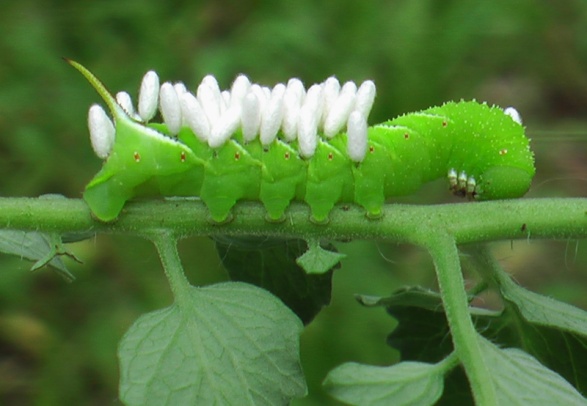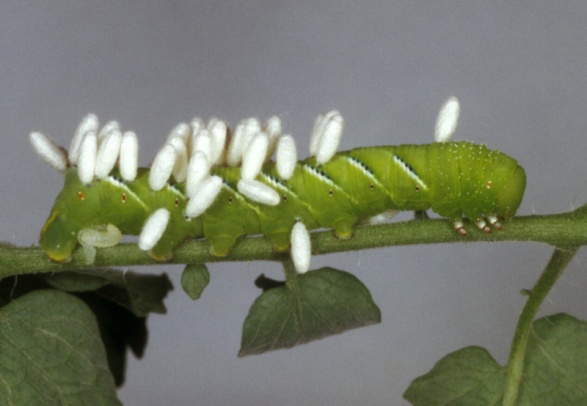
Cotesia congregata (Say)
(Insecta: Hymenoptera: Braconidae)
Cotesia congregata is a gregarious endoparasitoid of tobacco hornworm, Manduca sexta (Linnaeus), and tomato hornworm, Manduca quinquemaculata (Haworth). Multiple larvae can develop inside a single host hornworm.
Adult wasps are about 2 mm long and slender with antennae almost as long as the body. The eggs are 0.5 mm long, oval, and described as colorless. The white larvae are 3 mm long. Cocoons are bright white, elongate and attached “standing up” in groups on the host larva.
Adults mate soon after emergence, and females then disperse to find new hosts. Once a suitable host larva is located, one female wasp may deposit between 50 and several hundred eggs into the larva’s body cavity. Hatching larvae feed on the host’s hemolymph, or body fluids, and fat body. Late second instars exit the host larva, molt into third instars, and quickly spin cocoons and pupate, remaining attached to the exterior of the host. The host stops feeding and dies during the parasitoid’s pupation process.
Cotesia congregata is native to the United States and occurs throughout the eastern states as well as in Canada, Brazil and Jamaica.
Like many braconid parasitoids, Cotesia congregata carries a polydnavirus that is co-injected with the eggs into the host and suppresses the host’s immune response.
Images
To save the Web-optimized images shown below to your hard drive:
PC users: right click to "Save Picture (or Image) As..."
Mac users: click and drag to your desktop.

Cotesia
congregata (Say)
pupae on a larva of tobacco hornworm, Manduca
sexta
(Photographer:
Lyle
Buss, University
of Florida)

Cotesia
congregata (Say)
pupae and one last larval instar (bottom left) on a larva of tobacco
hornworm, Manduca
sexta
(Photographer:
Lyle
Buss, University
of Florida)